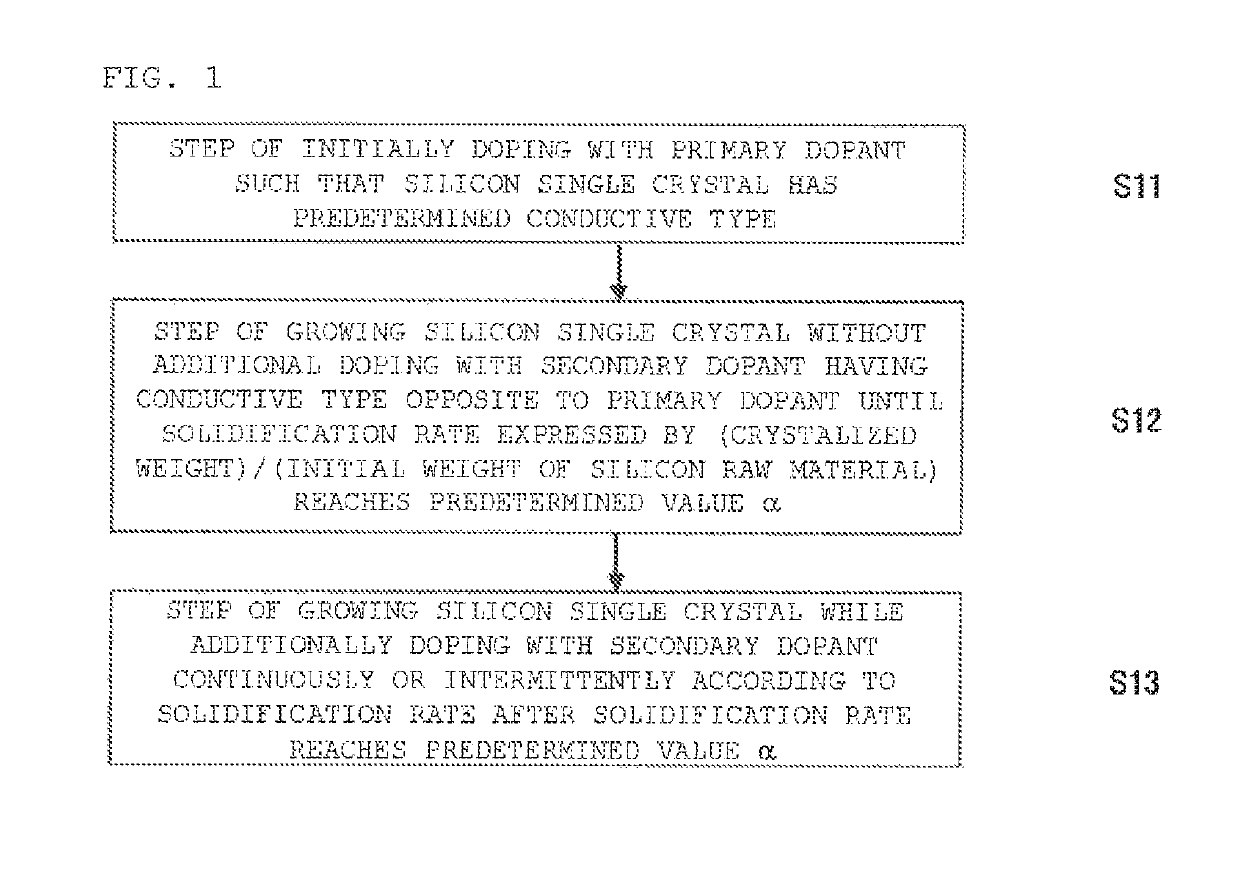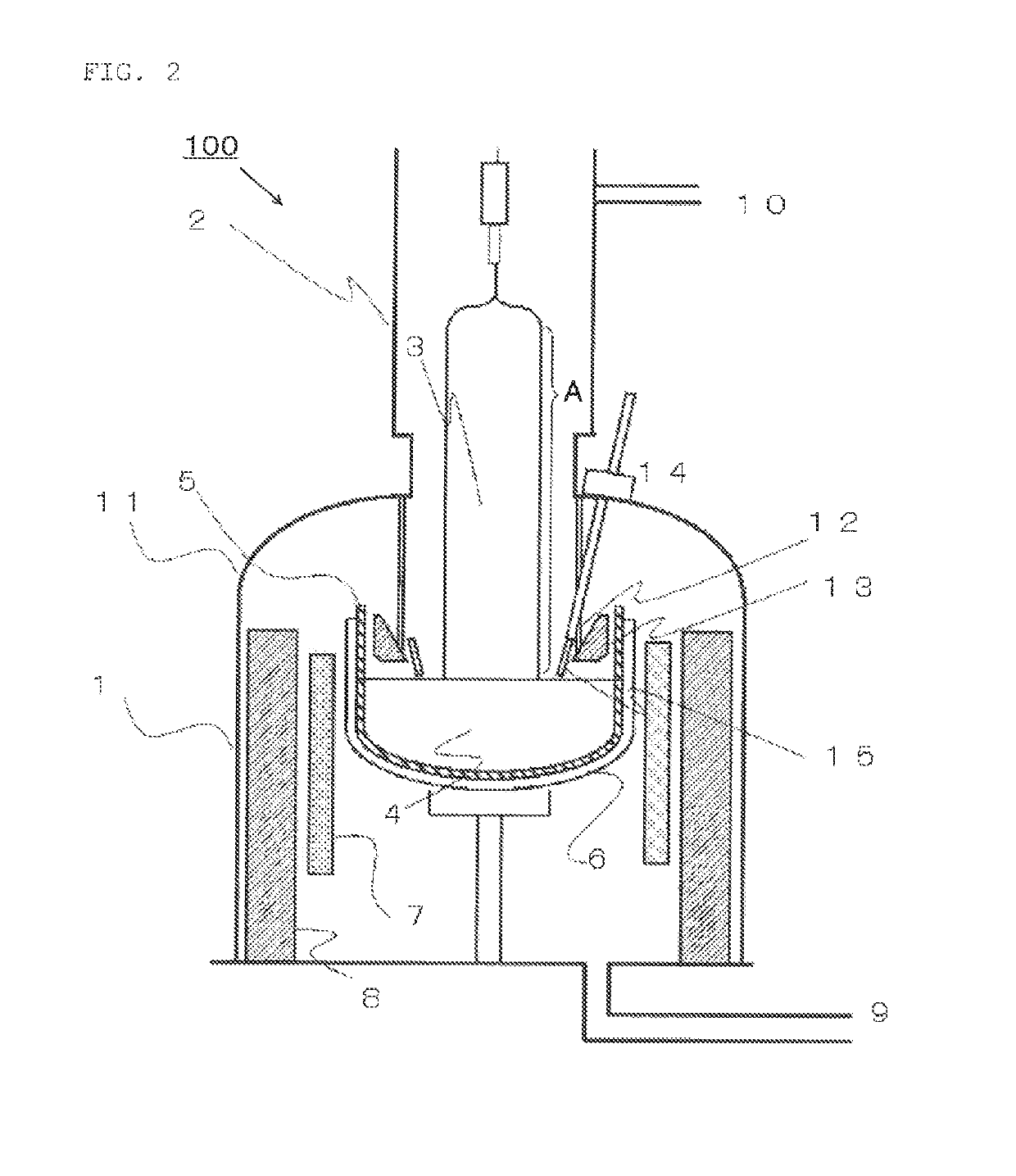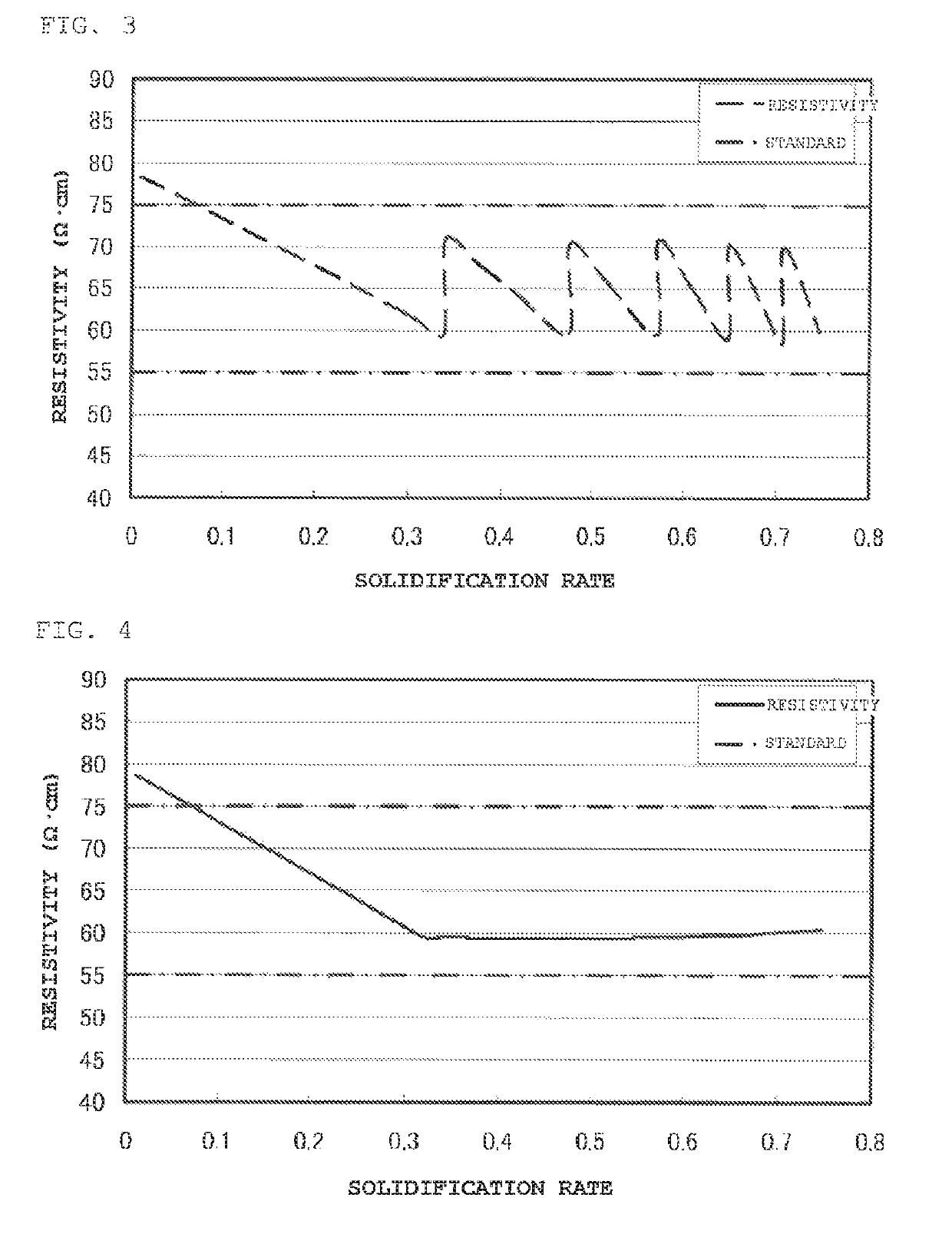Method for controlling resistivity and N-type silicon single crystal
a technology of resistivity and silicon single crystal, which is applied in the direction of crystal growth process, polycrystalline material growth, chemistry apparatus and processes, etc., can solve the problems of high cost of epw, difficult to uniformly distribute fz method in axial direction, and difficulty in increasing crystal diameter, etc., to inhibit the reduction of yield and high precision
- Summary
- Abstract
- Description
- Claims
- Application Information
AI Technical Summary
Benefits of technology
Problems solved by technology
Method used
Image
Examples
example 1
[0067]An n-type silicon single crystal having a resistivity standard of 55-75 Ω·cm and a diameter of 200 mm was grown with the CZ single crystal growth apparatus 100 shown in FIG. 2. The initial charge amount of silicon raw materials was 200 kg, and about 160 kg of a silicon single crystal was grown. Considering a single crystal top portion inferior in qualities other than resistivity (e.g., oxygen concentration or the like), initial doping was carried out by using phosphorus (P) as the primary dopant such that the resistivity reached the standard when the straight body portion had a length of about 20 cm from the top of the straight body portion and the solidification rate became about 0.09. In regard to the doping amount, 0.82 g of a doping agent prepared by pulverizing a silicon single crystal having a phosphorus concentration of 4×1019 atoms / cm3 was used. This doping amount allows the crystal to satisfy the resistivity standard up to a straight body portion length of about 100 c...
example 2
[0070]After the crystal of Example 1 was grown, about 160 kg of a silicon raw material was additionally fed so as to give a total raw material weight of 200 kg. For growing the second silicon single crystal, an n-type silicon single crystal having a resistivity standard of 55-75 Ω·cm and a diameter of 200 mm was grown. Calculations showed that the phosphorus (P) concentration remaining in the raw material melt 4 after completion of growth of the first silicon single crystal was 1.7×1014 atoms / cm3, and the boron (B) concentration remaining in the raw material melt 4 after completion of growth of the first silicon single crystal was 6.7×1013 atoms / cm3. Considering these residues, 0.79 g of a doping agent obtained by pulverizing a silicon crystal having a phosphorus (P) concentration of 4×1019 atoms / cm3 was introduced to prepare a raw material melt for growing the second silicon single crystal such that the resistivity reached the standard when the straight body portion had a length of...
PUM
| Property | Measurement | Unit |
|---|---|---|
| resistivity | aaaaa | aaaaa |
| diameter | aaaaa | aaaaa |
| resistivity | aaaaa | aaaaa |
Abstract
Description
Claims
Application Information
 Login to View More
Login to View More - R&D
- Intellectual Property
- Life Sciences
- Materials
- Tech Scout
- Unparalleled Data Quality
- Higher Quality Content
- 60% Fewer Hallucinations
Browse by: Latest US Patents, China's latest patents, Technical Efficacy Thesaurus, Application Domain, Technology Topic, Popular Technical Reports.
© 2025 PatSnap. All rights reserved.Legal|Privacy policy|Modern Slavery Act Transparency Statement|Sitemap|About US| Contact US: help@patsnap.com



